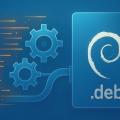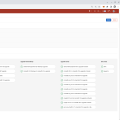Corporate best practices for upstream open source contributions
This post is based on presentation given at the Validos annual members’ meeting on June 25th, 2025.

This post is based on presentation given at the Validos annual members’ meeting on June 25th, 2025.

In this post, I demonstrate the optimal workflow for creating new Debian packages in 2025, preserving the upstream git history. The motivation for this is to lower the barrier for sharing improvements to and from upstream, and to improve software provenance and supply-chain security by making it easy to inspect every change at any level using standard git tooling. Key elements of this workflow include: Using a Git fork/clone of the upstream repository as the starting point for creating Debian packaging repositories. Consistent use of the same git-buildpackage commands, with all package-specific options in gbp.conf. DEP-14 tag and branch names for an optimal Git packaging repository structure. Pristine-tar and upstream signatures for supply-chain security. Use of Files-Excluded in the debian/copyright file to filter out unwanted files in Debian. Patch queues to easily rebase and cherry-pick changes across Debian and upstream branches. Efficient use of Salsa, Debian’s GitLab instance, for both automated feedback from CI systems and human feedback from peer reviews. To make the instructions so concrete that anyone can repeat all the steps themselves on a real package, I demonstrate the steps by packaging the command-line tool Entr. It is written in C, has very few dependencies, and its final Debian source package structure is simple, yet exemplifies all the important parts that go into a complete Debian package:

After careful consideration, I’ve decided to embark on a new chapter in my professional journey. I’ve left my position at AWS to dedicate at least the next six months to developing open source software and strengthening digital ecosystems. My focus will be on contributing to Linux distributions (primarily Debian) and other critical infrastructure components that our modern society depends on, but which may not receive adequate attention or resources.

Are you a student aspiring to participate in the Google Summer of Code 2025? Would you like to improve the continuous integration pipeline used at salsa.debian.org, the Debian GitLab instance, to help improve the quality of tens of thousands of software packages in Debian?

Becoming a Debian maintainer is a journey that combines technical expertise, community collaboration, and continuous learning. In this post, I’ll share 10 key habits that will both help you navigate the complexities of Debian packaging without getting lost, and also enable you to contribute more effectively to one of the world’s largest open source projects.

Most people with Linux experience have at some point installed .deb files on Debian or the more famous variant of it, Ubuntu. Programmers who have been involved with packaging and shipping software know that the code that generates those .deb packages is always in the debian/ subdirectory in a software project. However, anyone who has tried to do Debian packaging also knows that all the automation involved can be challenging to grasp, and building packages, modifying packaging files, and repeatedly rebuilding them can feel way more frustrating than iterating in regular software development. As Debian has been around for three decades already, there is a lot of online documentation available, but unfortunately, most of it is outdated, and reading about old tools might just add to the confusion. Thus, let me introduce an explainer of what the structure in 2025 should look like on a well-maintained Debian package source, and what benefits it brings. First, I’ll run through the basics to ensure all readers have them fresh in their mind, and further down, I get into the increasingly complex workings of how Debian source packaging works and why they have a certain git repository structure.
Of all CI systems I’ve used during my software development career, both as developer and manager, GitLab CI has proven itself to be the overall best system out there.
